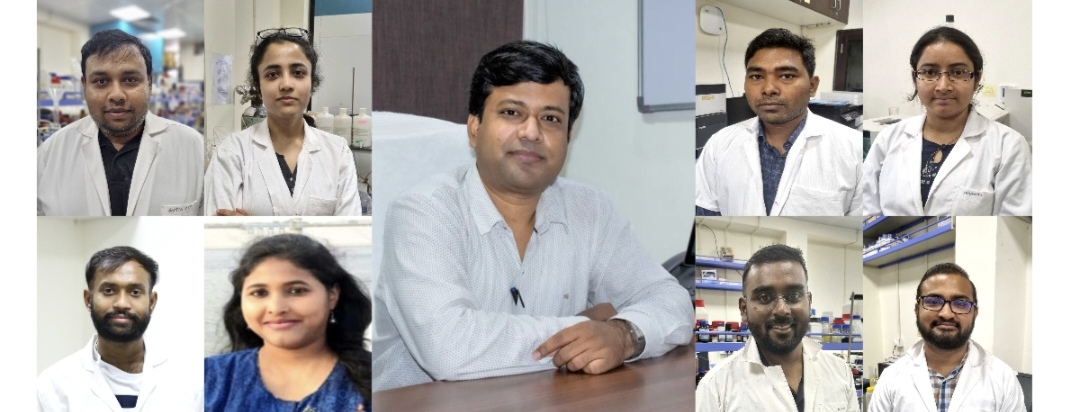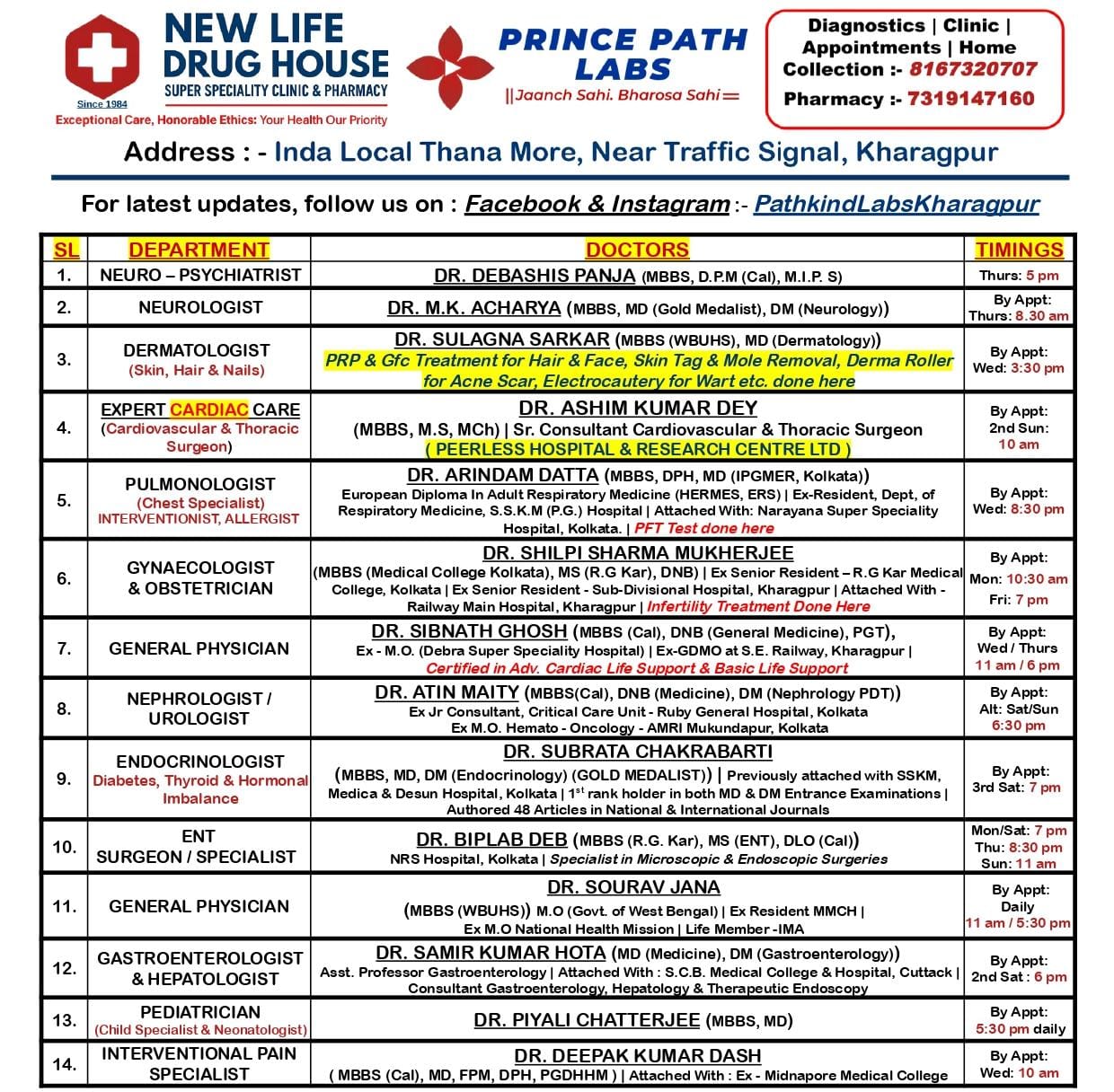सांप के जहर से बनाया नया पेप्टाइड, यह रोगाणुरोधी होने के साथ ही, शीघ्र घाव भरने वाला और कीटाणुनाशक भी






आईआईटी जोधपुर के शोधकर्ताओं ने सांप के जहर से बनाया नया पेप्टाइड, यह रोगाणुरोधी होने के साथ ही, शीघ्र घाव भरने वाला और कीटाणुनाशक भी है



- इस रोगाणुरोधी पेप्टाइड SP1V3_1 को घाव पर कीटाणुनाशक के लिए और उपचार के लिए मरहम तौर पर लगाया जा सकता है।
- इस पेप्टाइड मोलेक्यूल को इन-विट्रो साइटोटॉक्सिस्टी अध्ययनों के आधार पर जैव संगत माना गया है।
- सभी जरूरी परीक्षण हो जाने के उपरांत इस रोगाणुरोधी पेप्टाइड SP1V3_1 में एक व्यापारिक फार्मास्यूटिकल उत्पाद के रूप में विकसित होने की अपार संभावना है।
Video Link:

https://drive.google.com/file/d/1_saipjP3Bqmx2BwM4gI9LoNCaUZD-GDP/view?usp=drive_link
जोधपुर, 18-सितंबर-2023: भारतीय प्रौद्योगिकी संस्थान जोधपुर के शोधकर्ताओं ने एक रोगाणुरोधी पेप्टाइड अणु, SP1V3_1 की संकल्पना को डिजाइन और संश्लेषित किया है, जिसके द्वारा ई. कोली और पी. एरुगिनोसा, निमोनिया, और एमआरएसए (मेथिसिलिन-प्रतिरोधी स्टैफिलोकोकस ऑरियस) जैसे ग्राम-पॉजिटिव और ग्राम-नेगेटिव बैक्टीरिया को नष्ट किया जा सकता है। यह पेप्टाइड मोलेक्यूल बैक्टीरियल मेम्ब्रेन्स के साथ इंटरऐक्ट करते समय एक हेलिकल संरचना का निर्माण करता है जिससे इन बैक्टीरिया को ख़त्म किया जाता है। विभिन्न अध्ययनों में पेप्टाइड मोलेक्यूल को गैर विषैले की श्रेणी में रखा गया है। म्यूरिन मॉडल में इस पेप्टाइड को शीघ्र घाव भरने में और एमआरएसए द्वारा शल्य चिकित्सा के बाद घाव पर संक्रमण को रोकने में भी मददगार पाया गया।
इस डिजाइन रणनीति में हमारा प्रमुख लक्ष्य सांप के जहर के रोगाणुरोधी गुण को खोए बिना उसके जहर से होने वाले जोखिम को कम करना है। इसलिए हमने सांप के जहर के पेप्टाइड को छोटा कर दिया और सांप के जहर के जहरीले हिस्से को हटा दिया है। इसके अलावा हमने एन-टर्मिनस पर हेलिकल शॉर्ट पेप्टाइड को जोड़ दिया ताकि जीवाणु कोशिका के अंदर हमारे नए डिज़ाइन किए गए उपचार को आसानी से प्रवेश कराया जा सके।
बैक्टीरियल एंटीबायोटिक प्रतिरोध एक व्यापक वैश्विक खतरा है जिससे निपटने के लिए वैज्ञानिकों को दुनिया भर में समाधान खोजना होगा। अधिकांश प्राकृतिक रूप से पाए जाने वाले रोगाणुरोधी पेप्टाइड्स में अलग-अलग हाइड्रोफोबिसिटी और चार्ज संरचनाएं होती हैं, जो उनकी शक्तिशाली बैक्टीरिया नष्ट करने की क्षमता के बावजूद मानव चिकित्सीय अणुओं के रूप में उनके उपयोग को काफी हद तक सीमित करती हैं। आईआईटी जोधपुर के शोधकर्ता, डॉ. सुरजीत घोष, प्रोफेसर, बायोसाइंस और बायोइंजीनियरिंग विभाग और स्मार्ट हेल्थकेयर विभाग के साथ डॉ. साम्या सेन, श्री रामकमल समत, डॉ. मौमिता जश, श्री सत्यजीत घोष, श्री राजशेखर रॉय, सुश्री नबनिता मुखर्जी, श्री सुरोजीत घोष और डॉ. जयिता सरकार ने इस पेपर को जर्नल ऑफ मेडिसिनल केमिस्ट्री में प्रकाशित किया है। (DOI:
https://doi.org/10.1021/acs.jmedchem.3c01150?urlappend=%3Fref%3DPDF&jav=VoR&rel=cite-as)
यह शोध दो प्रमुख समस्याओं का समाधान प्रस्तुत करता है:
- पहला यह कि इस पेप्टाइड्स की मेम्ब्रेनोलिटिक क्षमता गैर-विशिष्ट प्रकृति बैक्टीरिया को इसके खिलाफ प्रतिरोध उत्पन्न करने का बहुत कम मौका देती है।
- दूसरा यह कि इसमें गतिविधि का एक व्यापक स्पेक्ट्रम है यानी, यह अच्छी जैव अनुकूलता को बनाए रखते हुए ई. कोली, पी. एरुगिनोसा, के. निमोनिया और एमआरएसए जैसे ग्राम-नकारात्मक और ग्राम-पॉजिटिव दोनों को प्रभावी ढंग से मार सकता है।
इस खोज के बारे में बात करते हुए आईआईटी जोधपुर के बायोसाइंस और बायोइंजीनियरिंग विभाग और स्मार्ट हेल्थकेयर विभाग के प्रोफेसर डॉ. सुरजीत घोष ने कहा, “रोगाणुरोधी प्रतिरोध की लगातार बढ़ती समस्या के कारण एंटीबायोटिक दवाओं के विकास में ठहराव के इस युग में रोगाणुरोधी पेप्टाइड्स नवीन जैवनाशक एजेंटों के विकास में महत्वपूर्ण भूमिका निभाते हैं। सभी जरूरी परीक्षण हो जाने के उपरांत इस रोगाणुरोधी पेप्टाइड SP1V3_1 में एक व्यापारिक फार्मास्यूटिकल उत्पाद के रूप में विकसित होने की अपार संभावना है।
उन्होंने आगे कहा, “इस पेप्टाइड को घाव पर कीटाणुनाशक और उपचार के लिए मरहम के तौर (अकेले या अन्य दवाओं / पेप्टाइड्स के साथ मिलाकर), प्रणालीगत प्रशासन के लिए एक इंजेक्शन / मौखिक दवा के रूप में, या एक एरोसोलिज्ड फॉर्मूलेशन के रूप में चिकित्सीय रूप से उपयोग किया जा सकता है।“
इस कार्य को भारत में पेटेंट कराने के लिए प्रारंभिक रूप से ई-फाइल किया गया है [इंडियन पैटेंट एप्लीकेशन (2022), IN 202211052566]। इस शोध के लिए भारत के एसईआरबी, और आईआईटी जोधपुर के एसईईडी द्वारा अनुदान दिया गया है। भविष्य में पेप्टाइड SP1V3_1 को एंटीप्रोटोज़ोअल या एंटीफंगल मोलेक्यूल के रूप में और शोध किया जा सकता है। FLPII (रोगाणुरोधी और इम्यूनोमॉड्यूलेटरी) मोटिफ के कारण, SP1V3_1 को भविष्य में कैंसर रोधी अणु के रूप में भी परीक्षण किया जा सकता है।
IIT Jodhpur researchers develop Antimicrobial, Wound Healing, and Disinfectant Peptide from Snake Venom
- The antimicrobial peptide SP1V3_1 can therapeutically be implemented as a component of an ointment for wound disinfection and healing.
- The peptide molecule has been found to be biocompatible based on in-vitro cytotoxicity studies.
- The invented peptide holds the potential to be developed into a marketable pharmaceutical product, as and when it passes the requisite trials.
Video Link:
https://drive.google.com/file/d/1YgON8pQseFJW8n_qK-ddXZMAj81MYz6P/view?usp=drive_link
JODHPUR, 18-September-2023: Indian Institute of Technology Jodhpur researchers have conceptualized, designed, and synthesized an antimicrobial peptide molecule, SP1V3_1, that can kill gram-positive and gram-negative bacteria like E. coli, P. aeruginosa, K. pneumoniae, and MRSA (methicillin-resistant Staphylococcus aureus) by adopting a helical conformation while interacting with bacterial membranes. The peptide molecule has been found to be non-toxic based on various studies. The peptide was also found to promote wound healing in the murine model and prevent on-site post-surgical infections by MRSA.
In this design strategy our primary aim is to reduce toxicity of the snake venom without loosing its anti-microbial property. Thus, we truncated the snake venom peptide and eliminated the toxic part of snake venom. Further we stitched helical short peptide at N-terminus for the smooth entry of our newly designed therapeutic inside the bacterial cell.
Bacterial antibiotic resistance is a prevailing global menace that scientists must tackle worldwide. Most naturally occurring antimicrobial peptides have varying hydrophobicities and charge compositions, limiting their use as human therapeutic molecules despite their potent bacteria-killing ability. The researchers of IIT Jodhpur, Dr. Surajit Ghosh, Professor, Department of Bioscience & Bioengineering and Smart Healthcare Department along with Dr. Samya Sen, Mr. Ramkamal Samat, Dr. Moumita Jash, Mr. Satyajit Ghosh, Mr. Rajsekhar Roy, Ms. Nabanita Mukherjee, Mr. Surojit Ghosh and Dr. Jayita Sarkar have published this paper in the Journal of Medicinal Chemistry (DOI: https://doi.org/10.1021/acs.jmedchem.3c01150?urlappend=%3Fref%3DPDF&jav=VoR&rel=cite-as)
This invention takes care of two major problems:
- Firstly, the non-specific nature of the membranolytic ability of the peptides gives the bacteria very little chance to generate resistance against it.
- Secondly, it has a broad spectrum of activity i.e., it can effectively kill both gram-negative and gram-positive organisms like E. coli, P. aeruginosa, K. pneumoniae, and MRSA, maintaining good biocompatibility.
Talking about the end application of the invention, Dr. Surajit Ghosh, Professor, Department of Bioscience & Bioengineering and Smart Healthcare Department, IIT Jodhpur, said, “In the era of developmental stagnation of antibiotics due to the ever-increasing problem of antimicrobial resistance, antimicrobial peptides are exciting leads in the development of novel biocidal agents. The invented antimicrobial peptide SP1V3_1 holds the potential to be developed into a marketable pharmaceutical product, as and when it passes the requisite trials.”
He further added, “The peptide can therapeutically be implemented as a component of an ointment (alone or in combination with other drugs/peptides) for wound disinfection and healing, as an injectable/oral drug for systemic administration, or as an aerosolized formulation to treat a wide range of respiratory bacterial pathogens.”
This work has been provisionally e-filed for patenting in India [Indian Pat. Appl. (2022), IN 202211052566. Provisional Filed]. The work has received the grants by SERB, India, and SEED grant, IIT Jodhpur. As a future scope, the peptide SP1V3_1 can be further explored as an antiprotozoal or antifungal molecule. Due to the FLPII (antimicrobial and immunomodulatory) motif, SP1V3_1 can also be tested as an anticancer molecule in the future.
###
About IIT Jodhpur
The Indian Institute of Technology Jodhpur was established in 2008, to foster technology education and research in India. The institute is committed to technological thought and action to benefit the economic development of India. Scholarship in teaching and learning; scholarship in research and creative accomplishments; and relevance to industry are three driving forces for us at IIT Jodhpur.
IIT Jodhpur functions from its sprawling residential Permanent Campus of 852 acres on National Highway 62, North-Northwest of Jodhpur towards Nagaur. This campus is meticulously planned and envisioned to stand as a symbol of academics. A large parcel of the Permanent Campus (of about 182 acres) is set aside for the development of a Technology Park to strengthen institute-industry interactions.
The institute is committed to a multidisciplinary approach of technology development. IIT Jodhpur, with its excellent track record of designing multi-disciplinary and transdisciplinary programs, has initiated the formation of Transdisciplinary Centres of Excellence.
###







